In Broadway’s The Great Gatsby , the Roaring ’20s Soar in Spectacular Fashion

- Oops!Something went wrong.Please try again later.
Photo: Matthew Murphy
Walking into New York City’s Broadway Theatre two weeks shy of The Great Gatsby’s grand April 25 opening night, the show’s creative team—including scenic and projection designer Paul Tate dePoo III—is buzzing. They’re putting finishing touches on the new musical adapted from the F. Scott Fitzgerald classic. That is, if there’s room.
The second largest Broadway house (the first being the Gershwin, home of the long-running hit Wicked) is nearly filled to capacity with glitz, glamor, and extravagant scenery. Shimmering gold chains (3,600 feet of them to be exact) that were hand-cut, painted, and hung from the ceiling create a willow tree that descends from above and borders a bandstand for one Jay Gatsby’s (Tony Award nominee Jeremy Jordan) extravagant events.
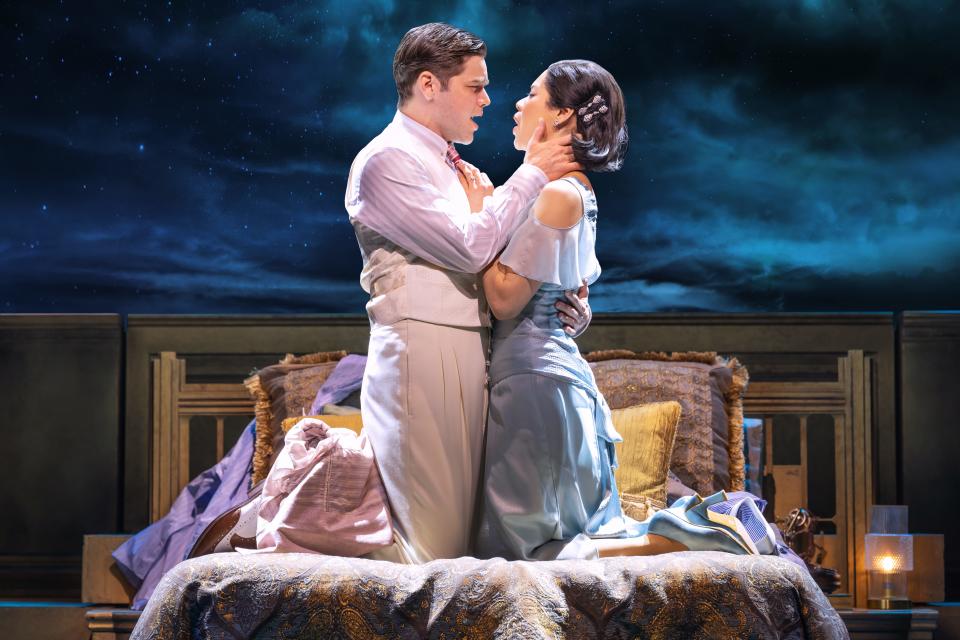
But that’s just one set of many. “We’ve run out of room,” dePoo tells Architectural Digest, explaining that pieces are stored overhead in what’s called the fly space—to eventually descend from above—as well as backstage and in the wings. Backstage is a whole other world entirely, filled with remaining sets and props, a bed for Gatsby’s tryst with his former lover, Daisy Buchanan (two-time Tony nominee Eva Noblezada), and two cars that drive on and off the stage. (“This started as a golf cart chassis,” dePoo explains, pointing to one of the vehicles.)
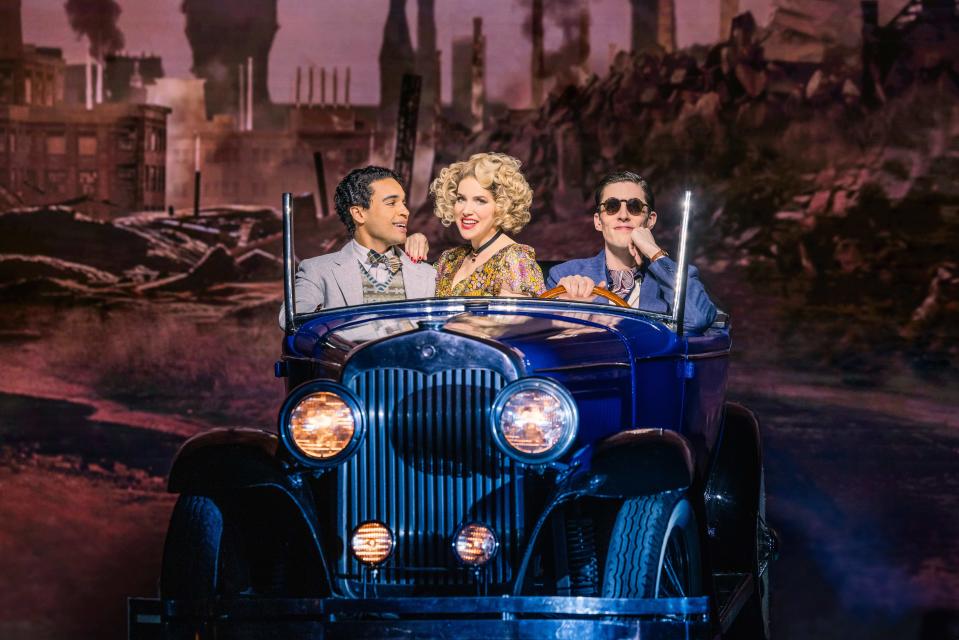
Opulence was key in creating the world of Gatsby, the classic story of a mysterious millionaire who pines for his now married ex and explores themes of social class and wealth in Prohibition-era America. The title has spawned numerous adaptations, including the 1974 film starring Robert Redford and the 2013 Baz Luhrmann movie with Leonardo DiCaprio as its titular character. DePoo was so enamored at the thought of bringing Jay Gatsby’s elaborate world to the stage, he started working on its design before he was even offered the job.
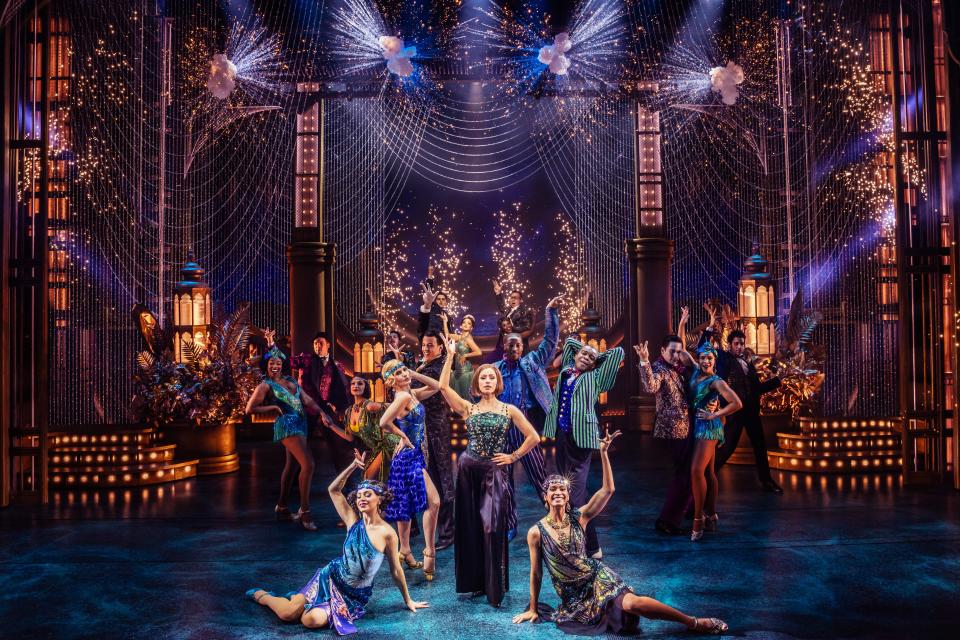
After The Great Gatsby entered the public domain in 2021, a reading of the Broadway adaptation was held a year later—and dePoo was in attendance. “From that first draft,” he explains, “I was like, I’m going to start thinking about this aesthetic and totally reread the book.” He adds that he had “obviously seen” the Baz Luhrmann movie, but wanted to stray from the stereotypical Art Deco aesthetic used for Jay Gatsby’s world, one primarily made up of geometric forms.
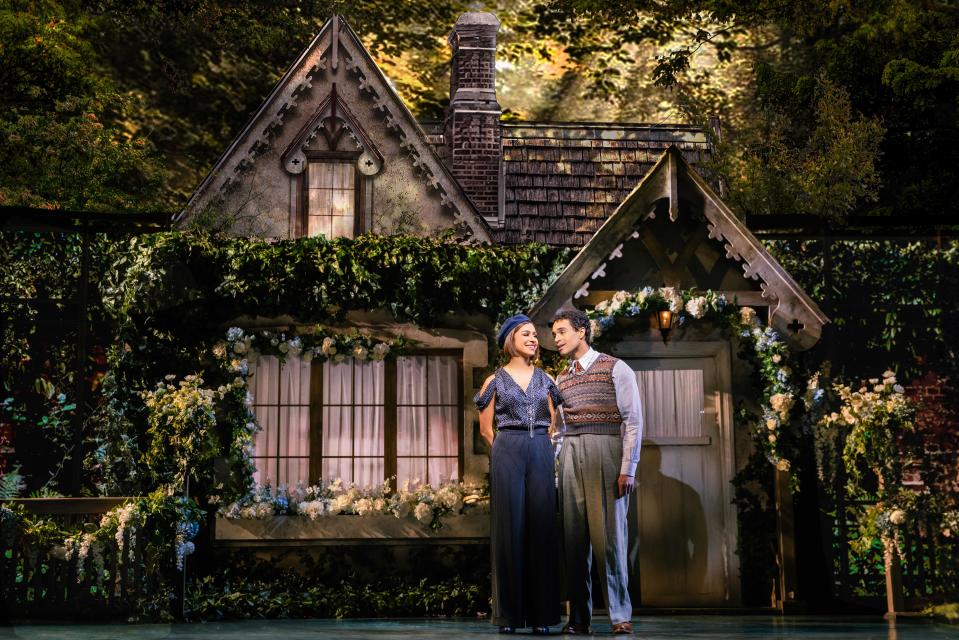
DePoo’s Gatsby, he says, is “very Art Nouveau mixed with industrialism, whereas Art Deco has a lot of chevron and a lot of repeating triangles. So I started thinking, Alright, what would Alexander McQueen do if he was the architect of this, and what did that mean?” DePoo approached director Marc Bruni shortly after that initial presentation and said, “I have a few ideas; I know it’s not mine, but I just want to show you.”
When he was officially offered the job, “It was thrilling,” says dePoo. “I went home, and I was like, ‘Oh my God, now what? Now make it happen.’” That includes the pivotal pool in Gatsby’s mansion, where (spoiler alert for those not familiar with the 1925 novel and its successors) the multi-millionaire falls into after being fatally shot.
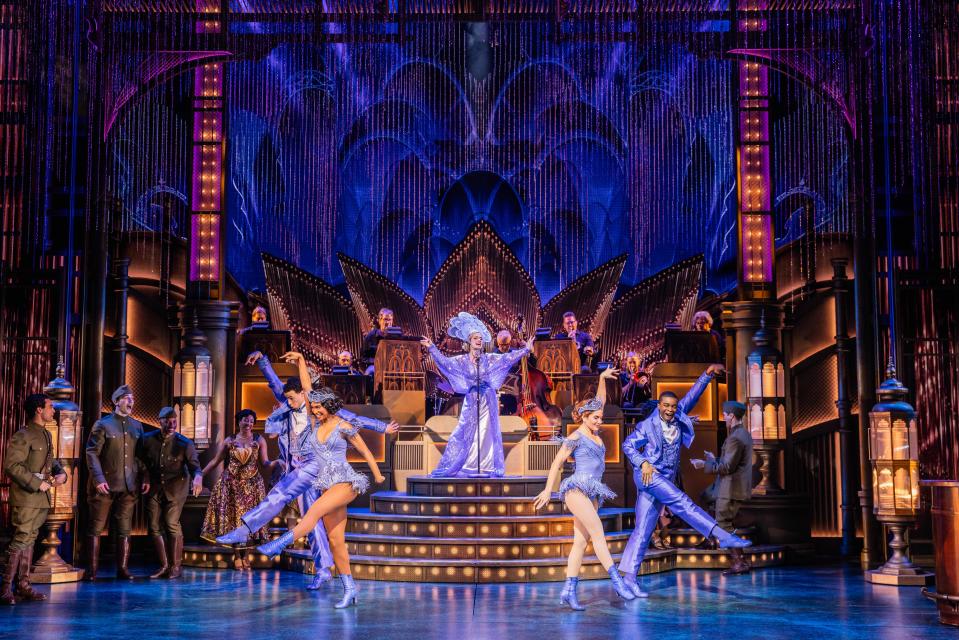
“The pool can be forgotten about, however is the most important at the end of the day,” says dePoo, whose design includes automated railings that pop up from the orchestra pit to reveal the illusion. Jordan, as Gatsby, does indeed fall to his death at the show’s end, resulting in audible gasps from the audience.
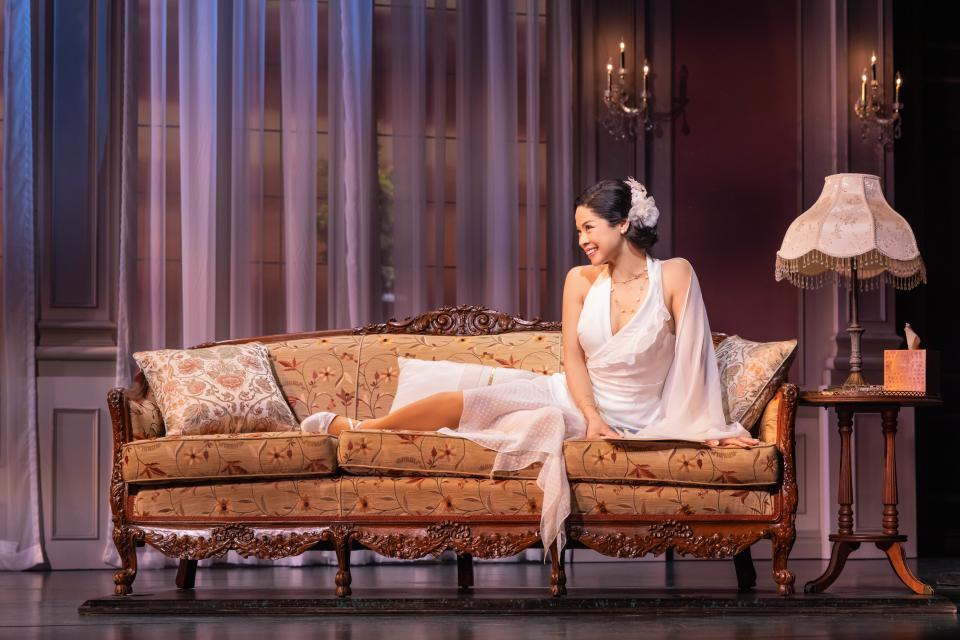
“Watching the audience at the peak of where we want them to feel enchanted and swept away, lean out of their seats forward—collectively—gives me goosebumps every time I see the show,” says dePoo. “What this room [of artists] has created… we don't stop, and we're the most passionate friends before collaborators. It’s an incredibly positive collective room that doesn’t stop until it’s right.”
Originally Appeared on Architectural Digest
More Great Celebrity Style Stories From AD
25 Years After Cruel Intentions, ’90s Noir Thrillers Are Still On Our Mood Board
Prentice Penny’s Maximalist Los Angeles Home Is All About Dreaming Big
Jeremiah Brent to Join Queer Eye Cast as Newest Member of the Fab 5
Step Inside Tan France’s Tudor-Style Dream House in Salt Lake City
Not a subscriber? Join AD for print and digital access now.
Browse the AD PRO Directory to find an AD-approved design expert for your next project.

